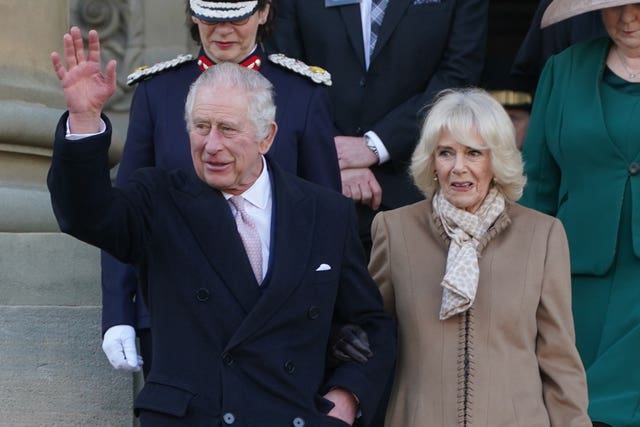The oil of chrism is a special oil used in several Christian traditions, including Catholicism, Anglicanism, and Eastern Orthodoxy. It is typically used in baptism, confirmation, and ordination, as well as in the consecration of churches and altars.
The oil of chrism is a mixture of olive oil and balsam, a fragrant resin. In Catholicism and Anglicanism, it is blessed by a bishop during the Holy Week liturgy, and in Eastern Orthodoxy, it is blessed by the patriarch during the Great Week leading up to Easter.
The use of the oil of chrism dates back to early Christianity, and it is mentioned in several passages of the Bible. In the Old Testament, the anointing of kings and priests with oil was a common practice, and in the New Testament, Jesus himself is anointed with oil by a woman in preparation for his burial.
In the Catholic Church, the oil of chrism is used in several sacraments, including baptism, where it is used to anoint the forehead of the person being baptized, and confirmation, where it is used to anoint the forehead of the person being confirmed. It is also used in the ordination of priests and bishops.
In the Eastern Orthodox Church, the oil of chrism is used in a similar way, and is believed to convey the gifts of the Holy Spirit to the person being anointed. It is also used to consecrate churches and altars, as well as holy vessels and icons.
The chrism oil which will be used to anoint the King during his Coronation is vegan friendly.
It was made with olives and perfumed with sesame, rose, jasmine, cinnamon, neroli, benzoin and amber as well as orange blossom, and will not use any ingredients from animals.
Some of the ingredients used in the holy oil to anoint Charles’ mother, the late Queen, in 1953, came from a musk deer, a civet cat and a sperm whale, Dr John Hall, a retired priest of the Church of England, said in a BBC documentary in 2018.
Sesame seed and olive oil, perfume with roses, orange flowers and jasmine were also used.

The Queen’s coronation in 1953 (PA)
The holy oil, which will be used to anoint Charles on May 6, was consecrated in Jerusalem on Friday.
A ceremony to make the oil sacred took place in The Church of the Holy Sepulchre and was led by the Patriarch of Jerusalem, His Beatitude Patriarch Theophilos III, and the Anglican Archbishop in Jerusalem, The Most Reverend Hosam Naoum.
It has been created using olives harvested from two groves on the Mount of Olives, at the Monastery of Mary Magdalene and the Monastery of the Ascension.
Mr Naoum said on Friday he had “felt a deep sense of spiritual experience”.
The archbishop added: “So what has been happening today, I think there is that thread, that this – the consecration of the oil for the enthronement and the Coronation – it brings about something of a deep and profound meaning.
“Both to King Charles, to the church and Jerusalem, to the Holy Land, and I think to the whole world.”

The Patriarch of Jerusalem, His Beatitude Patriarch Theophilos III, with the chrism oil in a silver urn at the Tomb of Jesus in Jerusalem (Patriarchate of Jerusalem/Buckingham Palace/PA)
Charles has strong links with the Holy Land because his grandmother Princess Alice, who harboured a Jewish family in Greece during the Second World War, is buried at the Russian Orthodox church of St Mary Magdalene in Jerusalem.
He last visited her tomb in 2020 during a visit to Israel and the Occupied Palestinian Territories and laid flowers.
The oil is stored in a bottle and traditionally held in great secrecy by the Dean of Westminster at Westminster Abbey.
During the ceremony, it is kept in a solid gold flask called an ampulla – an artefact shaped like an eagle.
The anointing of a new monarch is so sacred it takes place under a canopy, transforming the moment into a deeply personal experience between the sovereign and God.
The King will also receive the orb, coronation ring and sceptre, and will be crowned with the majestic St Edward’s Crown and blessed during the historic ceremony.
Camilla will also be anointed with holy oil and crowned, just like the Queen Mother was when she was crowned Queen in 1937.
However, the controversial Koh-i-noor diamond will not feature in the crown.

The coronation is set for May 6 (Owen Humphreys/PA)
The famous gem was first set in a cross at the front of Queen Mary’s crown when it was worn at her coronation in 1911 but it was replaced by a replica in 1937 when the original was moved to the Queen Mother’s crown for her and George VI’s coronation.
Neither the original nor the replica will be used in the Coronation of the King and Camilla, with diamonds from the late Queen’s personal collection used instead, a Buckingham Palace spokeswoman said.
The Koh-i-noor was seized by the East India Company after its victory in the Second Anglo-Sikh War of 1849.
It was given to Queen Victoria and has remained in the Crown Jewels ever since.
The governing party of Indian prime minister Narendra Modi is reported to have expressed concern that the famous gem would provide an unwelcome reminder of the British Empire.
Camilla is set to become the first consort since the 18th century to reuse a crown at a Coronation.







